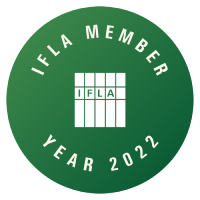Understanding Copyright
Copyright is a legal concept that gives the creator of original work exclusive rights to its use and distribution. This means the author or creator has the right to control how their work is used, copied, distributed, and displayed. Copyright applies to various forms of work, including:
- Literary Works: Books, articles, essays
- Artistic Works: Paintings, sculptures, photographs
- Musical Works: Songs, compositions
- Audiovisual Works: Movies, TV shows, videos
- Digital Works: Software, databases, websites
Key Points About Copyright:
- Automatic Protection: Copyright protection is automatically granted when a work is created and fixed in a tangible medium (e.g., written down, recorded).
- Duration: Copyright typically lasts for the life of the author plus an additional 70 years. For corporate or anonymous works, it lasts 95 years from publication or 120 years from creation, whichever is shorter.
- Exclusive Rights: The copyright holder has exclusive rights to reproduce, distribute, perform, display, or license the work.
Observing Fair Use
Fair Use is a legal doctrine that allows limited use of copyrighted material without needing permission from the copyright owner, under certain conditions. Fair use is intended to balance the interests of copyright holders with the public’s interest in the dissemination of information.
Factors Determining Fair Use:
-
Purpose and Character of the Use:
- Non-profit educational purposes are more likely to be considered fair use compared to commercial purposes.
- Transformative use (altering, commenting, or criticizing the original work) is more likely to be fair use.
-
Nature of the Copyrighted Work:
- Using factual works (e.g., news reports, educational materials) is more likely to be fair use compared to highly creative works (e.g., novels, artworks).
-
Amount and Substantiality of the Portion Used:
- Using smaller portions of the work favors fair use. However, even a small portion may not be fair if it’s considered the “heart” of the work.
-
Effect on the Market for the Original Work:
- If the use of the material could negatively affect the market for the original work, it is less likely to be considered fair use.
Examples of Fair Use:
- Educational Use: Teachers copying a few pages of a book to distribute to a class.
- Commentary and Criticism: Quoting a few lines from a book in a review or scholarly article.
- News Reporting: Using brief clips of a video to report on a news story.
- Parody: Creating a parody that ridicules or comments on the original work.
Best Practices for Observing Copyright and Fair Use:
- Always Attribute: Even if your use qualifies as fair use, give credit to the original creator.
- Limit Your Use: Use only the amount necessary for your purpose.
- Transform Your Use: Whenever possible, add new meaning or message to the original work.
- Evaluate Each Use Separately: Fair use is decided on a case-by-case basis; always evaluate the specifics of your situation.
- Seek Permission: When in doubt, ask for permission from the copyright holder.
Understanding and respecting copyright and fair use is essential for legal and ethical use of information. By following the principles outlined above, you can use copyrighted materials responsibly and contribute to a culture of respect for intellectual property.

